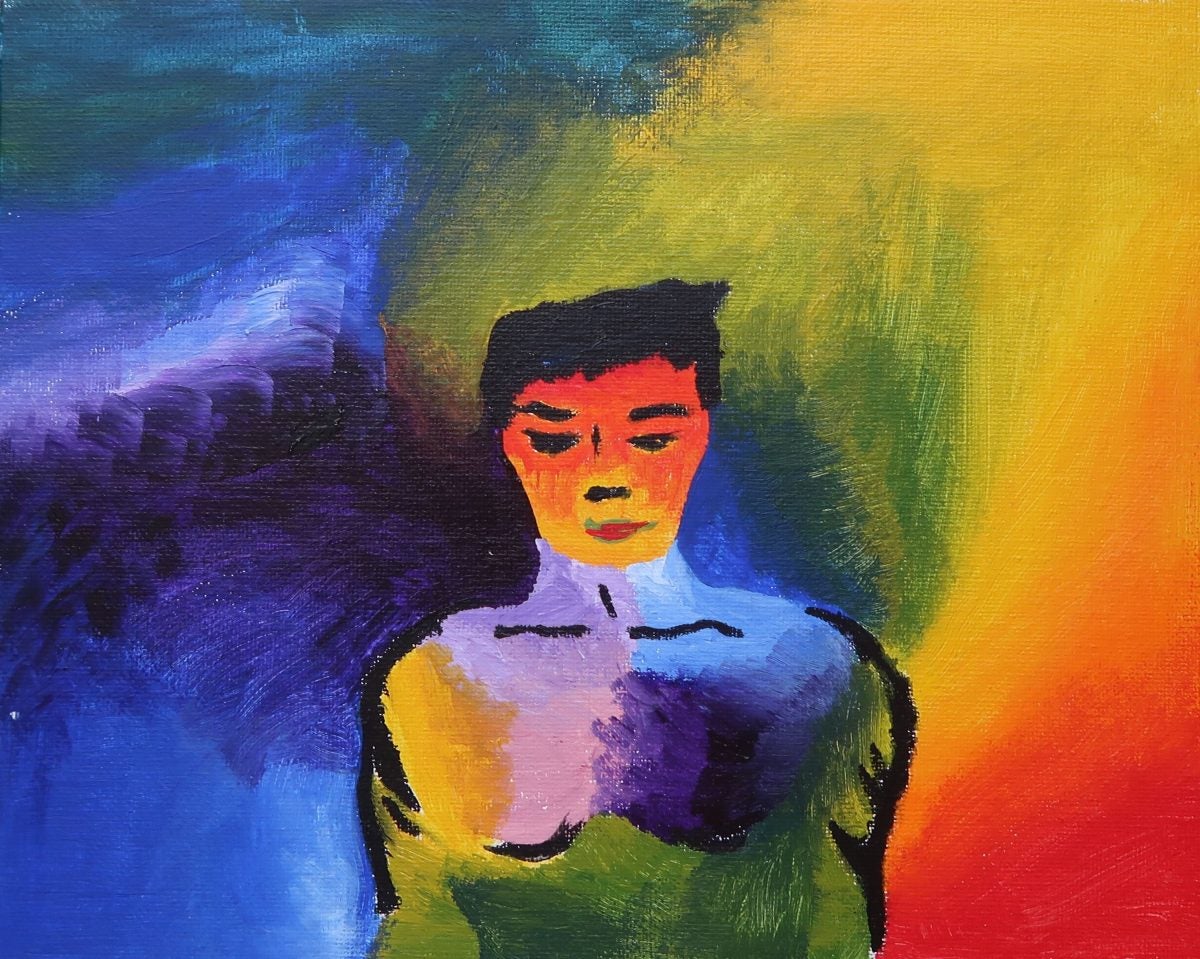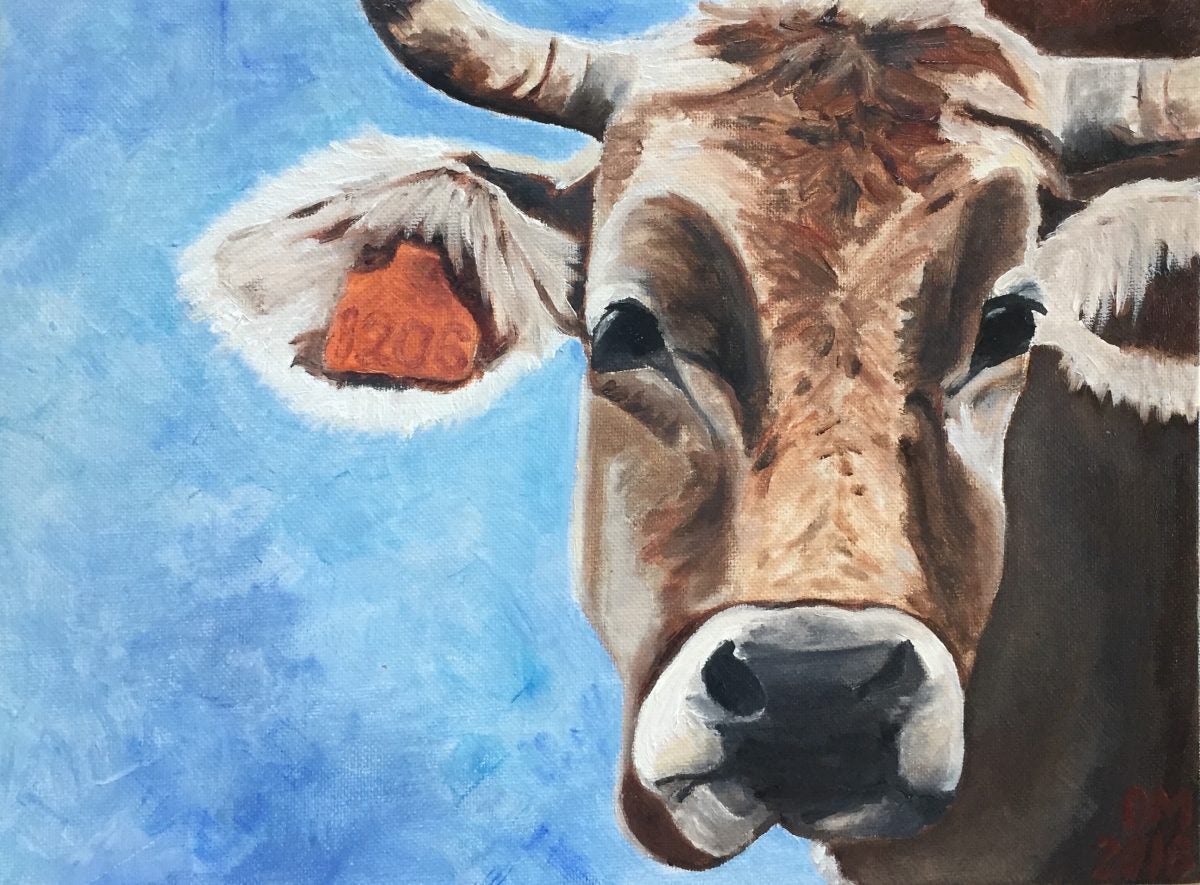Arts publication seeks art and creative works from health sciences campus
Submissions are open until Dec. 2 for the 2020 edition of type.cast, a publication that celebrates the artistic talents of students, residents, faculty and staff across the Division of Health Sciences.
Type.cast features a range of art from photography, drawing, painting and carving to creative literary works and musical arts. Founded in the Brody School of Medicine and led by student editors, type.cast aims to enhance the cultural climate of the Health Sciences Campus. This issue’s editors are Ryan Kramer and Mary Quaile.

“The Early Years,” an acrylic painting by Brody School of Medicine student Amy Rangel ‘20, appeared in the 2018 issue of type.cast.
“I value interdisciplinary experiences and want to promote the crossover between the arts and humanities and science and medicine,” said Quaile, a first-year medical student. “I think these experiences help keep me human, and that is something I really want to guard as I enter the grueling years of medical school. I think the synergy between medicine and the arts that type.cast promotes is going to help me become a more whole, compassionate and creative doctor.”
In the past, type.cast has been focused solely on medical students; recently, the scope of submissions widened to include students, residents and others in the School of Dental Medicine, College of Nursing and College of Allied Health Sciences. The result has been a broader range of creativity and a more diverse showcase of talent within type.cast, which is celebrating that evolution over a dozen years since its inception.
“Art prepares students in health sciences for the future,” said Dr. Annette Greer, faculty advisor of type.cast and associate professor in Brody’s Department of Bioethics and Interdisciplinary Studies. “Art increases divergent thinking, whereas the logic of science is convergent and often linear. Both convergent and divergent thinking are needed in our complex world of technology and emerging issues in health; thus, both should be developed through educational means.”
Third-year Brody student Emily Kragel spent two years in editing roles—and as an artist—for type.cast after double-majoring in visual art and computer science at Duke University.
“Most of my work as an undergrad was in documentary studies, which allowed art to act as a lens by which to learn about people, culture and health disparities and to give people a chance to share their stories,” Kragel said. “When I learned about type.cast at Brody, I was very excited for the opportunity to have an outlet to not only allow students to learn from art, but also to allow students to teach others and share their own creative expressions.”

“Cow from Burgos,” an oil on canvas painting by Brody School of Medicine student Danielle McLaughlin ’22, was featured in type.cast’s 2019 issue.
Todd Savitt, a professor in Brody’s Department of Bioethics and Interdisciplinary Studies, served as faculty advisor during type.cast’s early years. He said the publication gave him and other faculty an opportunity to see students from a different perspective.
“As an instructor in the medical school, I only saw these folks in their medical student mode,” he said, “and found myself surprised to learn about their non-student worlds. Their photography, art, poems and short essays/stories – usually non-medical – allowed me to see them as full-dimensional people who found beauty, sadness, love, anger and evil, just as I do.”
Savitt said type.cast provides an outlet for health sciences students to express themselves and analyze their environments.
“Students are human beings, not just students,” he said, “so they live in the world and need ways of commenting on it just as the rest of us do. Providing creative outlets during their education allows them to remain part of the larger world and not just immersed in the medical world.”
Some of their perspectives as part of that exploration will be on display on the pages and website of the next issue of type.cast.
“Brody School of Medicine graduates and health sciences contributors should take pride in the production of type.cast,” Greer said, “as an exemplar for other academic health centers.”
Submissions to the 2020 issue of type.cast can be emailed to brody.type.cast@gmail.com. Instructions for submitting work are available at www.ecu.edu/typecast. Entries will be judged on artistic and literary merit, creativity and originality.
–by Spaine Stephens, University Communications